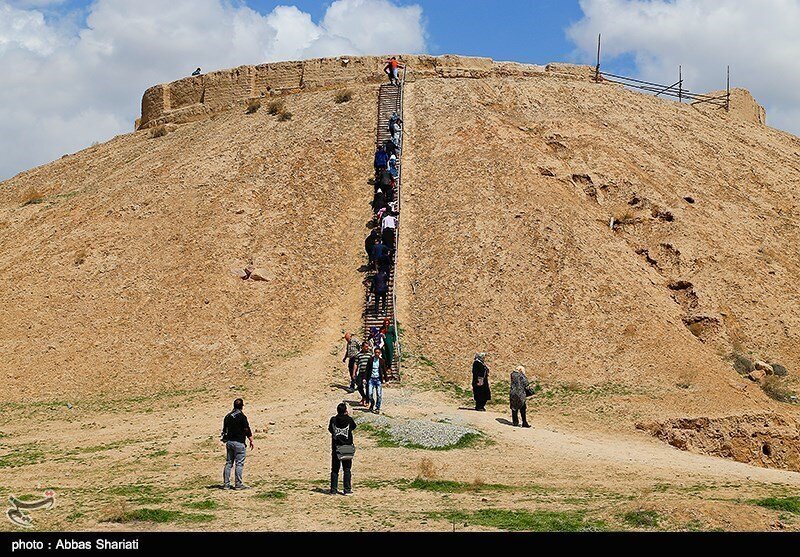Archaeological dig uncovers potential Achaemenid ruins near Iranian capital

TEHRAN – Within boundaries of 9,000-year-old site located near the Iranian capital, a team of archaeologists has discovered some ruins that their initial estimates suggest may date from the Achaemenid era ( c. 550-330 BC).
The discovery was made in Doushan Tepe, one of the satellite hills situated within the Ozbaki archaeological zone, ILNA reported on Wednesday.
So far, the archaeological zone has yielded cultural material dating from the first half of the 7th millennium to the first half of the first millennium BC, i.e. the Medes period.
“Although at the beginning of the [archaeological] season, the work was started to identify relics from the Iron Age or Media, but now it’s assumed what we are dealing with is architectural remains dating from the Achaemenid period,” said Iranian archaeologist Mehrdad Malekzadeh, who leads the team.
“Of course, this matter should be tested and after the laboratory's retort, we can talk about it clearly.”
“Here in Doushan Tepe, we have found square tiles measuring 35cm by 40cm, which are probably related to the Achaemenid period.”
They are very similar to the Achaemenid tiles, which are square-shaped with sides of 40cm or 35cm, he added.
However, the samples will be used for radiocarbon and OSL tests. If this is the case, the Achaemenid period will be added to the time sequence introduced years ago by Iranian archaeologist Yousef Majidzadeh.
OSL dating typically provides useful dates ranging from a few centuries to about 150,000 years.
The eighth season of excavations on the site began on August 23 and is still underway to throw new light on the history of human settlements at the site.
Experts suggest that the discovery of certain objects in the archaeological zone indicates some kind of commercial links to Susa in the Khuzestan region, southwest Iran.
Majidzadeh believes the discovery of objects such as tablets, statuettes, and ‘jagged’ earthenware in the hill indicates some kind of commercial link between Susa in Khuzestan and this in Tehran province.
According to the available data, the first well-documented evidence of human habitation on the Iranian Plateau was found in several excavated cave and rock shelters, located mainly in the Zagros Mountains of western Iran, dating to the Middle Palaeolithic or Mousterian period (c. 100,000 BC).
From Caspian Sea in the north to Baluchestan in the southeast, the Iranian plateau extends for close to 2,000 km. The land encompasses the greater part of Iran, Afghanistan, and Pakistan west of the Indus River, containing some 3,700,000 square kilometers. Despite being called a “plateau”, it is far from flat but contains several mountain ranges, the highest peak being Damavand in the Alborz mountain range at 5610 m, and the Dasht-e Loot east of Kerman in Central Iran, falling below 300 m.
Ozbaki archaeological zone, also called Ozbaki Tappeh or Uzbaki Teppeh, is situated near Nazarabad, some 80 km west of Tehran.
AFM
Leave a Comment